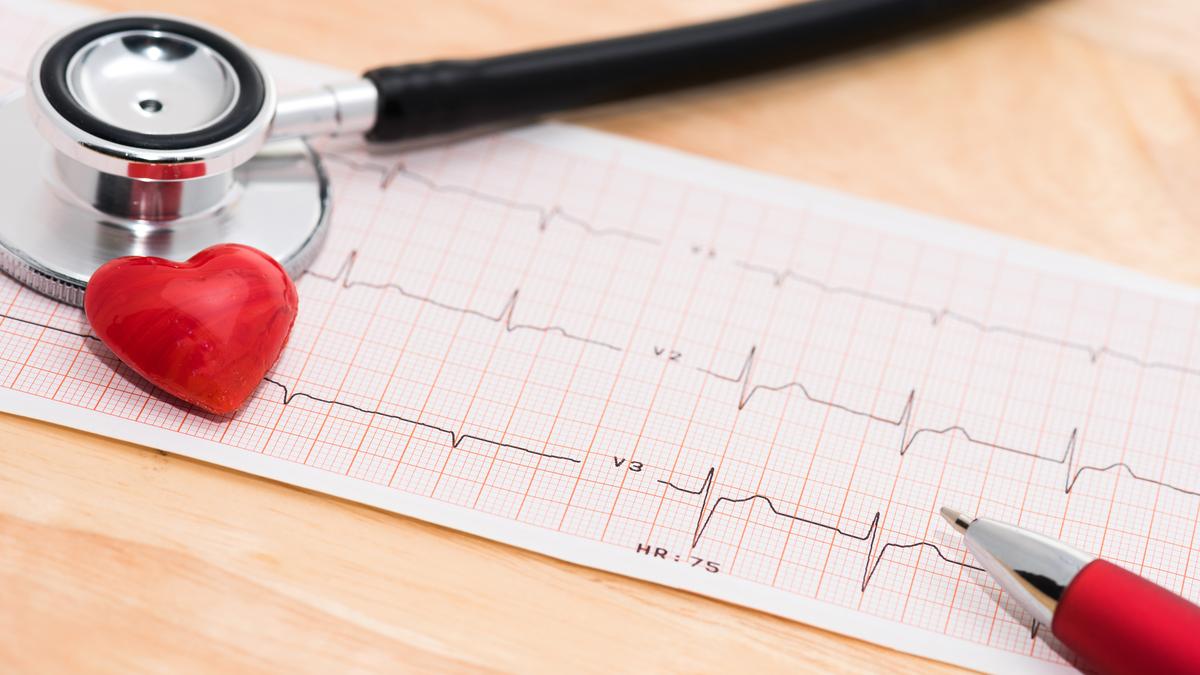Today, heart attacks are increasingly common among young people. Photograph used for representational purposes only
| Photo Credit: Getty Images/iStockphoto
Aditya (name changed), the 47-year-old father of two, has always been active. A university-level badminton player in his younger days, he remained a regular runner and fitness enthusiast. A 5,000-metre run at the start of each weekend helped him maintain his physical and mental fitness despite a busy schedule. There was no past medical history. He looked healthy and fit.
During a work meeting one day, Aditya experienced a searing pain in his chest. He also felt uneasy. The pain continued even after he took two antacids. He began to perspire after a while, and experienced a heavy feeling in both shoulders. Sitting next to him, a co-worker saw something was amiss and called an emergency helpline. Aditya was taken to a hospital with an emergency and cardiac team. His ECG showed that he was having a heart attack. After being hurried to the cath lab, an angiography was performed on him. A blood clot had blocked one of his main heart arteries. In between performing an angioplasty, the doctors informed the family. To remove the blockage, a stent was inserted. After a straightforward procedure, he was moved to the intensive care unit (ICU), then to the ward, and after three days, when he was discharged he was stable.
When spoken to after the procedure, his only question was, Doctor, will I be able to run again? Will I be able to play sports like before?’ Younger people who experience heart attacks usually worry about this. Despite their apparent activity, many of them have hidden risk factors.
Today, heart attacks are increasingly common among young people. The main causes include stress, long work hours, sleep deprivation, junk food, smoking, inactivity, and obesity. Additionally, some individuals experience elevated homocysteine or lipoprotein (a), along with other silent risk factors like excessive levels of bad cholesterol.
Aditya’s life after the heart attack
Aditya’s cardiac function decreased from 60% to 40% after the heart attack. He began taking blood thinners, cholesterol-lowering pills, and medications to help his heart pump more efficiently. It was recommended that he follow a strict diet and consume more salads, fruits, vegetables, and lean meats like chicken or steamed fish. Ghee, vanaspati, fried food, and too much oil were to be avoided.
After a week, he started taking 4,000–5,000 steps per day. He was able to walk 4–5 kilometers every day for a month. His strength slowly returned, and he resumed work. His LDL cholesterol had decreased to 50 mg/dL and cardiac function had improved to 50% at the three-month monitoring. He had more vitality. He began alternating between walking and quick runs. After seven months, he managed to complete a 10-kilometre office marathon.

Never ignore warning signs
Never ignore warning indications such as shoulder pain, perspiration, or chest discomfort. Lives can be saved by immediate intervention and treatment. After a heart attack, it is possible to resume your regular life with proper support, care, medications, and lifestyle modifications.
Heart attacks are no longer just a problem for the elderly. A lot of young, active people are also at risk because of aspects related to their lifestyle. Regular health check-ups, regular exercise, a nutritious diet, and timely treatment can save lives; therefore, it is important to never ignore early symptoms. This case shows that even in young people, recovery from a heart attack is possible with timely treatment, quality medical care, and healthy lifestyle changes.
(Dr. Abhijit Joshi, is head of department and consultant – cardiology, Manipal Hospital, Baner, Pune. [email protected])
Published – April 16, 2025 12:12 pm IST
